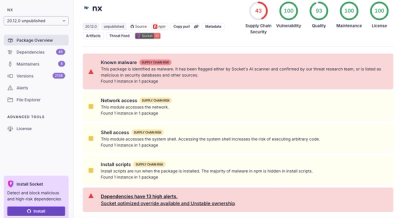= jekyll-epub
Create an eBook (epub) of your Jekyll blog
== How To
=== Create your blog ;)
First, you need to create your own Jekyll Blog ;) Please, refer to the {Jekyll documentation}[http://wiki.github.com/mojombo/jekyll/].
=== Configuration
Then, you must add a configuration file : _epub.yml. This file is pretty similar to the Jekyll configuration file (_config.yml) except that's you must add in some specifics entries. This entries are in the mapping epub:
_epub.yml :
epub:
name: "My Jekyll Blog"
lang: en
identifier: my_blog.example.com-123456
Note that's in the file, you can also use all the {Jekyll configuration options}[http://wiki.github.com/mojombo/jekyll/configuration]. However, it is prudent not to change the permalink option, or you may spend a lot of time to set the proper access to resources (images, CSS, ...). You have been warned;)
Here is the list of options :
- name: String : The name of your book. This is a mandatory option.
- title: String : The title of your book. This is a mandatory option.
- identifier: String : A unique identifier for your book. If you have one, you can use an ISBN. If not given, Jekyll-epub will generate an UUID for you.
- subject: String : The subject of the book.
- description: String : An abstract of your book.
- relation: String :
- creator: String : The identity of the creator of the book.
- contributor: String : The identity of the contributor of the book.
- publisher: String : The identity of the publisher.
- date: Date : You really want to know ;)
- rights: String : The copyright of your book.
- type: String : The type of the book (I mean the kind)
- format: String : Some informations about the book format (The physical format)
- source: String : Information about the source of the book.
- coverage: String : Provides information on the spatial and/or time relevance of the book.
- cover-image: String : The image to use for the cover of the book (i use a 540 × 648 pixels image)
- pages-order: [page | post] : A list of pages and/or posts you want to order at the begenning of the book. If you don't specify any order, Jekyll-epub will generate the book with the posts first (from the older to the newer), then the pages.
=== Layout
If you want to use a special layout for your book, you can use the epub: mapping in the header of your pages, posts, layouts. This mapping is similar to the layout: mapping except that's it is specific for the epub generation. In this example :
epub: my_ebook
layout: post
This is the content of my post...
When we generate the epub, Jekyll-epub will use the layout my_ebook.
=== Liquid extension
You can also use two Liquid extensions :
{% epub %}
... This will only be display in the epub ...
{% endepub %}
{% noepub %}
... This will not be display in the epub ...
{% endnoepub %}
Since I have add those two extensions, if you want to use them, you also need to use one of the two following solution
==== Use jekyll_epub
- Run jekyll_epub instead of jekyll to generate you site and eBook.
Otherwise, you will not be able to generate your (web) site.
==== Use Rack tasks
- Create a Rakefile in your root's Jekyll blog directory
- Add the following code in your Rakefile
require 'jekyll/epub/tasks'
Jekyll::Epub::Tasks do
web :serve_port, 4000
epub :destination, "_epub"
end
- Use rake epub to generate the epub, use rake site to generate the website, use rake serve to serve the website.
== Note on Patches/Pull Requests
- Fork the project.
- Make your feature addition or bug fix.
- Add tests for it. This is important so I don't break it in a
future version unintentionally.
- Commit, do not mess with rakefile, version, or history.
(if you want to have your own version, that is fine but bump version in a commit by itself I can ignore when I pull)
- Send me a pull request. Bonus points for topic branches.
== Copyright
Copyright (c) 2010 Gregoire Lejeune. See LICENSE for details.



